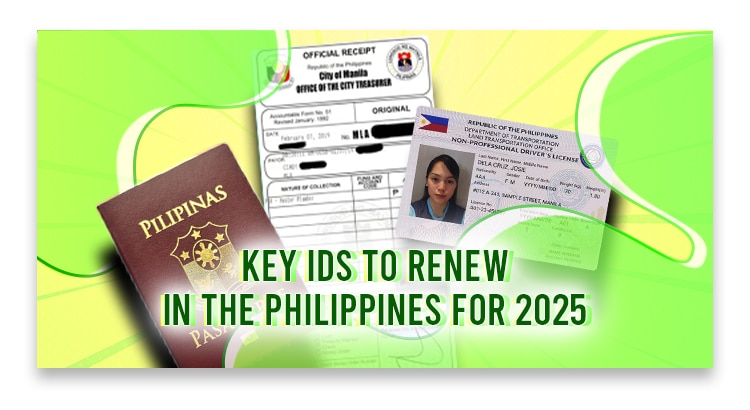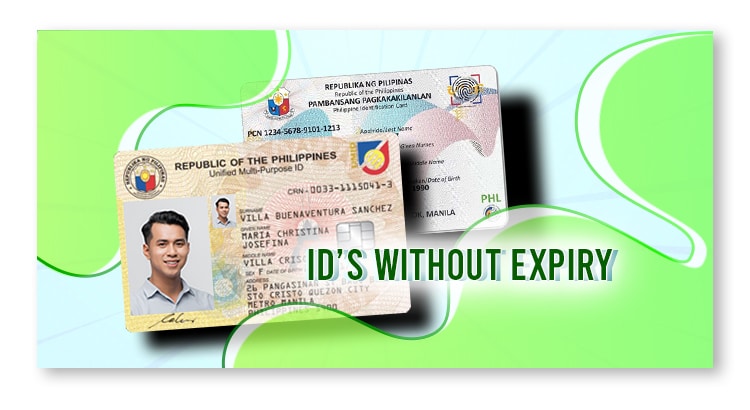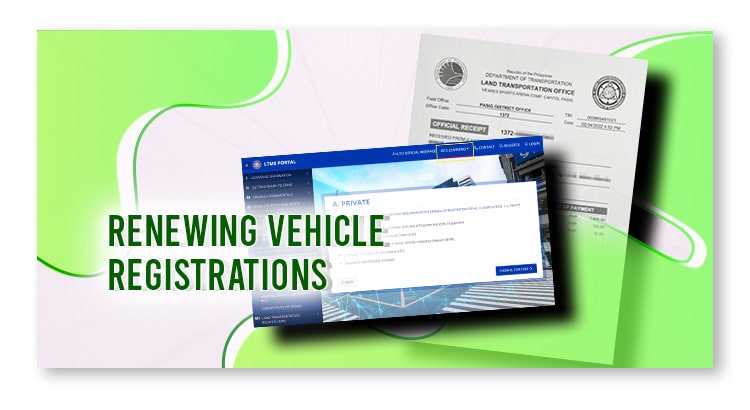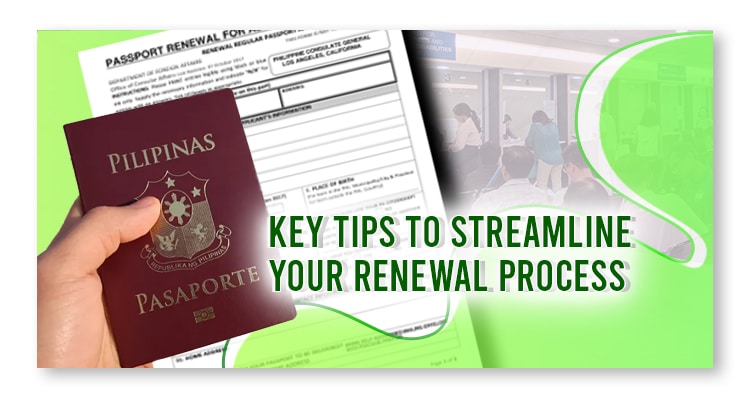Introduction
Updating your IDs and registrations in the Philippines on time is a great way to start the year.
After all, missing deadlines can lead to penalties, delays, and difficulties accessing essential services.
But which IDs and registrations need renewal – and when? Here’s a complete guide to help you stay on track.
Key IDs to Renew in the Philippines for 2025
Here are some valid ID in the Philippines you should stay on top of:
Philippine Passport
The Philippine passport is an official ID that is testament to your Filipino citizenship and lets you travel abroad.
It includes your photo, personal details, and biometric data, and must be renewed periodically so you can travel abroad without much trouble.
Validity and Renewal Timeline
Philippine passports are valid for 10 years for adults (5 years for minors). Renewal is recommended at least 6 months before expiration to avoid travel issues.
Online Appointment Process
Schedule an appointment through the DFA’s official website. Walk-ins are generally not allowed, except for specific cases.
Tip: Book early because the earliest available slots are usually two months later.
Required documents:
- Confirmed Online Appointment
- Application Form (You’ll fill out the form while scheduling the appointment.)
- Old Passport
- Photocopy of the bio (front) page of your existing passport
- PSA-issued Birth Certificate (You can get it online from the PSA website)
- Valid Government ID
- Marriage Certificate (only for married females, unless they kept their maiden name)
Next, you’ll need to show up personally to have your photo and biometrics taken.
The processing fee is Php 950 (regular, 12 business days) or Php 1200 (special, 7 business days).
Driver’s License
This is a government-issued Valid ID in the Philippines that allows you to legally drive vehicles (cars, motorcycles, and other vehicles) in domestic settings.
In the Philippines, there are two types: professional and non-professional driver’s licenses.
The main difference is that a Professional Driver’s License is for those who’ve made driving their primary occupation (PUVs like taxis, buses, or trucks), while a Non-Professional Driver’s License is for personal or non-commercial use.
Non-professional licenses are valid for 3 years, while professional licenses are valid for 5 years.
It’s best to renew at least a week before expiration to avoid penalties.
Here’s how:
Step 1: Comprehensive Driver’s Education (CDE) Online Validation Exam
First take the CDE online validation exam on the Land Transportation Management System (LTMS) portal.
You need to score at least 80% to pass, but you can retake it if you don’t.
Afterwards, print the results, as it’s one of the required documents for renewal.
Step 2: Medical Exam
The next step is to visit an LTO-accredited clinic or facility to have a medical exam service, which ensures you’re fit to drive safely.
For PWDs, you need to bring a medical certificate to confirm your condition.
The exam costs Php 600 and you should be issued a medical certificate for the results.
Step 3: Visit LTO Driver’s License Renewal Branch
If you get the clearance above, visit the LTO license renewal branch and submit these documents at Window 1:
- CDE Exam Results
- Medical Certificate from LTO-accredited clinic
- Driver’s License
- Photocopy of front and back of driver’s license
Next, pay the renewal fee of Php 585.
For late renewal, charges are:
- Php 75 – 1 day to 1 year expired
- Php 150 – 1 year and 1 day to 2 years
Lastly, LTO will capture your biometrics and signature.
Afterwards, your new Driver’s License will be issued shortly.
Occupational Tax Receipt (OTR)
An Occupational Tax Receipt (OTR) is a local government document, similar to a “business permit,” that proves you’ve paid the tax required to legally practice your profession or trade within a city or municipality.
Take note that this is different from the income tax by the BIR.
(You can check this link on how to file your income tax as a freelancer or remote worker.)
OTR payment is typically made annually at the start of the year, often in January, with a registration fee of Php 200.
Deadlines and penalties vary by LGU, so check with your city or municipality for details. Late payments often incur a penalty, similar to the PTR, of ₱75 plus 2% of the fee.
You can check this link for the step-by-step process on how to get your OTR.
ID’s Without Expiry
Did you know some valid government valid IDs in the Philippines never expire? If you don’t have one yet, this year is the perfect time to get it.
Here are the government IDs you can apply for that stay valid for life.
Unified Multi-Purpose ID (UMID)
The Unified Multi-Purpose ID (UMID) is a government-issued valid ID in the Philippines used for transactions with SSS, GSIS, PhilHealth, and Pag-IBIG.
It combines multiple IDs into one and is widely accepted for government and private transactions. The card includes personal details, a photo, and a security chip.
You are eligible to apply for a UMID if you’re an SSS member with at least one posted contribution and if you possess the following:
- Duly accomplished UMID application form
- 1 Government Primary ID or 2 Secondary IDs.
Here are the steps to get yours:
Step 1: Schedule Your Appointment or Walk in to an SSS branch.
You can schedule an appointment online using the My SSS portal or walk in to an SSS branch with a UMID enrollment facility.
However, if you visit an SSS branch, note that the 10th digit of your SS or Employer (ER) ID number indicates the designated day for your transactions.

Step 2: Submit Your Requirements
On the appointed day, go to your SSS branch, submit your documents, and present your original IDs if needed. The officer will check and validate your records.
If it’s your first time to apply, you can get your ID free of charge.
Step 3: Register Your Biometrics
Have your photo, fingerprints, and signature captured as part of the registration process.
Step 4: Wait for your UMID Card
The staff will let you know when your card will be ready for delivery or pick-up. Typically, the UMID card takes about 30 days to be issued.
National ID
The Philippine National ID (PhilSys ID) is a government-issued valid ID in the Philippines for all Filipino citizens and resident aliens.
It serves as a single ID for transactions with government and private institutions, making processes simpler and more convenient.
The ID includes personal details like your name, birthdate, address, unique PhilSys Number (PSN), and biometrics (photo, fingerprints, and iris scan).
You just need to prepare the 1 primary government ID or 2 secondary government IDs.
Step 1: Register online at the PhilSys website.
The first step is to register at the PhilSys Website.
Step 2: Visit the PhilSys Registration Center
Next, go to the PhiSys registration center with your valid ID/s. No need to schedule an appointment.
Step 3: Have Your Biometrics Taken
Afterwards, the personnel will capture your biometrics.
Step 4: Collect Your Transaction Reference Number (TRN).
Lastly, collect your TRN for tracking the delivery of your National ID.
Renewing Vehicle Registrations
Renew your vehicle registration next year to make sure it’s still safe for use.
The renewal process also ensures your Official Receipt (OR) and Certificate of Registration (CR) remain valid, sparing you from penalties and compliance issues.
Otherwise, the LTO imposes fines starting at Php 100 – Php 200 per week, which can quickly add up over time.
If you’re over a month late, you’ll pay an additional 50% of the MVUC rate.
Plus, you risk a Php 10,000 fine and car impoundment if caught driving an unregistered vehicle.
To avoid this, here are the steps for renewing your private car registration:
Private Vehicles
First, look up your renewal schedule. The last digit of your plate number reveals which month you should renew, while the second-to-last digit indicates the week for the same.
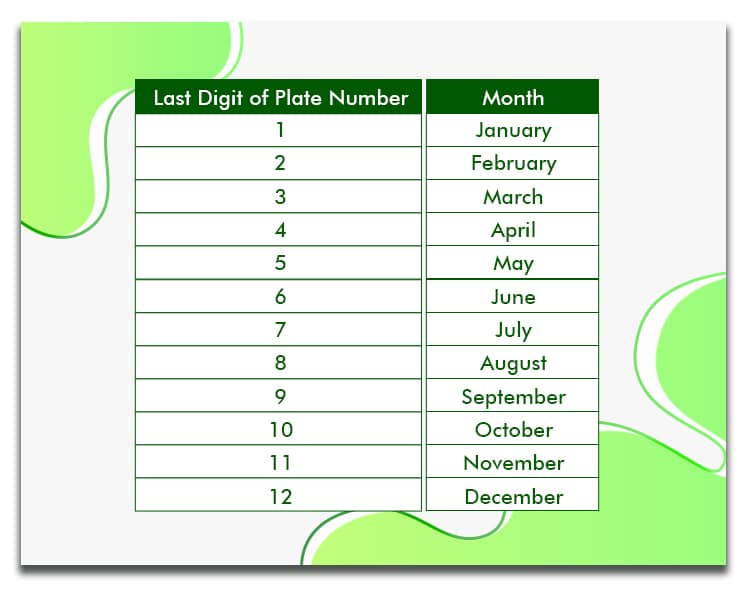
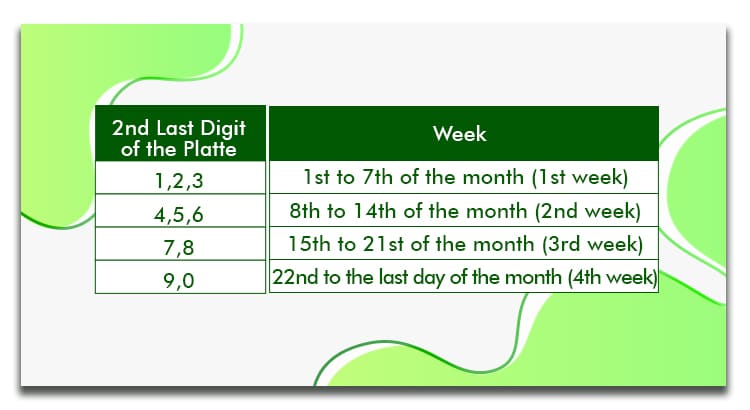
Required Documents:
- Photocopy of Certificate of Registration (CR)
- Official Receipt (OR) of payment
- Taxpayer’s Identification Number (TlN)
- Original copy or electronic Insurance Certificate of Cover (CoC)
- Original copy of the Certificate of Emission Compliance (CEC)
- Completed Motor Vehicle Inspection Report (MVIR)
Step 1: Have Your Vehicle Inspected and Tested
- Emission Testing: Go to an LTO-authorized center for your vehicle’s emission test. If it passes muster, you’ll get a Certificate of Emission Compliance (CEC).
- Requirements:
- Photocopy of OR and CR
- Testing Fee (Ranges from Php 430 to Php 600)
- Requirements:
- Vehicle Inspection: Prepare for the LTO inspection. This evaluates your vehicle’s road-worthiness and whether its chassis number matches the OR/CR details.
- Requirements:
- Original and Photocopy of OR and CR
- Testing Fee (Php 600 for private vehicles)
- Requirements:
Step 2: Secure an Insurance Certificate of Cover (CoC)
The Insurance Certificate of Cover (CoC) is required as proof of your Compulsory Third-Party Liability (CTPL) insurance, which covers damages or injuries to others in the event of a vehicular accident.
You can renew this every year through an LTO-accredited CTPL insurance provider by providing the following requirements:
- Original and Photocopy of OR and CR
- Original and Photocopy of Driver’s License
- CTPL fee (Php 500 – Php 1,000)
Step 3: Visit a Land Transportation Office (LTO) branch or renew online.
On-site Renewal
If it’s your first time renewing, visit the nearest LTO office.
They’ll process your application through the Land Transportation Management System (LTMS) Portal, so you can opt to renew online next time.
Next, you need to submit the documents and pay the renewal fees. The amount depends on the vehicle type, which typically amounts to Php 1,600 – Php 5,600.
Afterwards, you can now claim your updated OR and CR.
Online Renewal
If you’re already registered on the LTMS portal, you can opt to renew online to avoid long queues and save time.
Just visit their website and log in. The system will automatically verify the COC and the Inspection Report Number.
Afterwards, pay the renewal fee, then print the system-generated OR.
Additional Requirements for Vehicle Renewal
Depending on your situation, you may need to provide extra documents or meet specific conditions when renewing your vehicle registration:
LTO Violations
If you have violations, you also need to resolve them first before the renewal. Here is a link to the list of violations and their corresponding penalties.
You can pay fines at any LTO branch nationwide, using cash or check, or through credit card at accredited centers like Bayad Center and SM Payment Centers.
Additionally, online payment options are available via accredited partners’ websites or mobile apps, allowing you to use credit cards or bank accounts.
Lost OR/CR
If you lost your OR or CR, you will need to secure a duplicate before renewal.
You will need the following documents:
- Notarized Affidavit of Loss/Mutilation from the registered MV or MC owner
- Latest Official Receipt (OR) of payment of registration (if available)
- Two valid government-issued IDs of the registered owner and photocopies with original specimen signature.
- Actual inspection of the motor vehicle
- Duly accomplished and approved Motor Vehicle Inspection Report (MVIR) (stencil form).
Afterwards, here are the steps to get your new OR or CR:
1st Step: Visit the LTO branch, where your car was originally registered.
2nd Step: Submit the documents to the evaluator for the computation of fees.
3rd Step: Proceed to Motor Vehicle Inspection.
4th Step: Pay the fees and get the OR. (Php 30 replacement fee)
5th Step: Submit the OR at the counter to get your new CR.
Key Tips to Streamline Your Renewal Process
Streamline your renewal process with these practical tips to save time, avoid penalties, and ensure a hassle-free experience.
Scheduling Appointments Early
Booking your appointment early gives you enough time to prepare your documents, avoid long lines, and steer clear of late renewal penalties.
Thanks to the rise of online booking systems for government services, securing an appointment for most government agencies is now easier and more convenient.
Early scheduling also helps you avoid the peak season rush, especially during the busy months at the start and end of the year.
Preparing Complete Documentation
Having all the required documentation ensures a smoother and faster renewal process by preventing delays or rejections.
Organize and pre-check your requirements, including IDs, proof of payment, and certificates beforehand to avoid missing anything.
Double-check that your forms are correct, IDs are valid, and photocopies are clear.
Being prepared helps government staff process your application quickly, saving you time and effort.
Utilizing Online Platforms
These speed up the renewal process by eliminating the need for in-person visits and long waits.
They simplify scheduling, form submission, and payment, helping you meet deadlines easily.
Here’s a list of the portals you can use to manage your renewal process efficiently:
- Passport – www.passport.gov.ph
- Driver’s License and Vehicle Registration – portal.lto.gov.ph
- UMID – member.sss.gov.ph
- National ID (PhilSys) – national-id.gov.ph
FAQs on ID and Registration Renewal in the Philippines
Have more questions? Here are some FAQs on ID and registration renewal in the Philippines
What happens if I miss my renewal deadlines?
If you miss your renewal deadlines, you may be subject to fines and penalties, such as additional charges, late fees, and the possibility of your vehicle being impounded in some cases.
Can someone process renewals on my behalf?
Some government agencies allow representatives to renew on other people’s behalf, depending on the circumstances:
Vehicle Registration Renewal
If you are unable to personally appear due to valid reasons (e.g., illness, injury, or being out of the country), a Special Power of Attorney (SPA) for your representative is required along with supporting documents (e.g., your OR/CR, valid IDs of the authorized person, etc.).
What should I do if I lose an ID or vehicle registration document?
Take note of the following steps:
- Report the loss to the relevant authority (e.g., government agency, motor vehicle office).
- File a police report (if required).
- Apply for a replacement by following the procedures enumerated in the previous section of this article.
Are there special renewal considerations for OFWs or senior citizens?
Most government agencies still follow the regular renewal process for OFWs and senior citizens. However, some make concessions like:
Passport
Senior citizens can use the Special Lane in Consular Offices in the Philippines by presenting proof of their status.
Vehicle Registration
Senior citizens and OFWs can renew via authorized representatives or online. A Special Power of Attorney (SPA) for the representative and supporting documents (like OR/CR, valid IDs of the representative) are required.
Conclusion
So whether you work in a traditional office or are among the growing number employed in homebased jobs in the Philippines, you can follow the tips in this guide to simplify your renewals and registrations.
Speaking of registrations, you can sign up with Remote Staff for legitimate and rewarding online jobs tailored to your skills and preferences – which offer the flexibility you need to get all your renewals done in time.
Sign up today!


